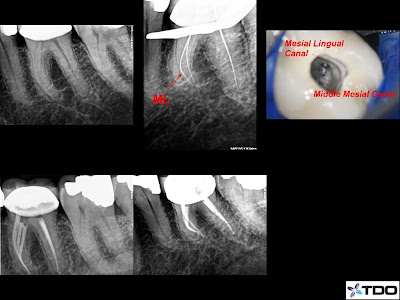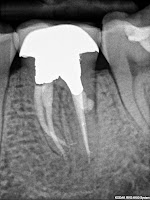Invasive Cervical Resorption is a relatively uncommon and often misdiagnosed form of external root resorption. This type of resorption is generally insidious and is often misdiagnosed as a type of internal root resorption. Unfortunately this misdiagnosis often leads to the loss of the tooth.
Invasive cervical resorption has four classifications:
 Class I
Class I is characterized as having a small lesion near the cervical area with shallow penetration into the dentin. You may observe a defect containing tissue that bleeds upon probing.
Class II has a well defined lesion that has penetrated close to the coronal pulp. You may begin to see a pink color in the crown of the tooth due to vascular tissue that is visible through thinning enamel. Upon radiological examination you will see a
radiopaque line surrounding the pulp space.
Class III denotes the extension of the lesion into the coronal 1/3 of the root. The lesion will have a 'moth eaten' appearance on a
radiograph. Most cases are diagnosed during this stage.
Class IV denotes a large area of resorption beyond the coronal 1/3 of the root. Most class IV cases have an unfavorable prognosis.
Early detection is critical to the
restorability of the tooth due to the aggressive nature of this condition. Dr.
Jarboe has expertise in the diagnosis of invasive cervical resorption and has successfully treated several teeth.























